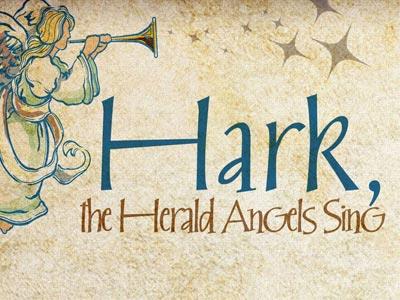-
Mark's Gospel Begins With A Freak
Contributed by Ronald Harbaugh on Nov 28, 2017 (message contributor)
Summary: A sermon for the Second Sunday of Advent, series "B"
2nd Sunday in Advent December 4, 2005 “Series B”
Grace be unto you and peace, from God our Father and from our Lord, Jesus Christ. Amen.
Let us pray: Dear Heavenly Father, during this season of Advent, open our hearts and minds by the power of your Holy Spirit, that we might hear your word anew for our lives. Turn us away from the mundane and meaningless routines of our lives, that with humble and repentant hearts we might look with joy to your advent among us. This we ask in Christ’s holy name. Amen.
I would like to begin by acknowledging that many of the thoughts that I will express in my sermon this morning have been drawn from Barbara Brown Taylor’s commentary on our text, published in her book, Home By Another Way.
With the season of Advent, we begin a new year on our liturgical calendar of proclaiming God’s redeeming grace. As many of you know, we follow a three-year lectionary, in which each of the three synoptic Gospels [Matthew, Mark and Luke] are featured. This year, most of our Gospel texts will be drawn from Mark, which is believed to be the first Gospel written, and is certainly the shortest.
In other words, Mark is rather straightforward, getting right to the point. This is evident in our text for this morning, which consists of the first eight verses of his Gospel. Notice the Mark doesn’t begin with angels whispering in Mary’s ear. There are no shepherds keeping watch over their flocks by night, no wise men from the East following a star, no big-eyed animals standing around a straw-stuffed manger. Nor does Mark attempt to give us a theological explanation of the incarnation, as does the Gospel of John, with his description of the Word becoming flesh.
Rather, Mark simply states the fact that he is writing about the good news of Jesus Christ, the Son of God. It is as if Mark doesn’t care about how the birth of Jesus took place, or how the incarnation occurred. He just states that Jesus is the Christ, the Son of God, and after loosely quoting an Old Testament prophesy, he jumps to the wilderness of Judea, to this old-time style prophet named John the baptizer and his call to repentance.
Now, given the terse, get right to the point style of Mark’s writing, don’t you find it a little bit strange that he would take the time to describe how John was clothed and what he ate? Yet Mark takes the time to tell us that John was clothed in a cheap, scratchy robe woven from camel’s hair, with a leather belt around his waist.
And what a diet he was on, certainly not one that would interest me. I think I would rather starve to death than eat locusts, even if they were dipped in honey. That sounds like a page out of the script for a “Survivor” challenge. Given this description, we can imagine that John’s hair and beard look as if they had never been cut or combed, and his body was as skinny as a cactus. Talk about making a statement with your appearance!
In fact, I doubt that there is a person gathered here this morning, who, if you were to meet a person dressed like John, living off the wilderness by eating locusts, wouldn’t look at him as some kind of freak. But that is not what I believe Mark is trying to tell us by his description of John. Quite the opposite, actually.
For a camel’s hair robe with a leather belt, is the exact same outfit that the prophet Elijah wore 800 years before him. Mark’s description of John the baptizer identified him as the messenger of God, predicted by Isaiah, dressed like Elijah – a prophet in the classic sense. It is Mark’s way of telling us, right from the beginning of his Gospel, that the fulfillment of God’s promise to send the Messiah, the Christ, was at hand.
I believe that the people living back at the time John the baptizer began his ministry, would have understood this strange dress and demeanor of this man in the wilderness, to be a sign that he was called by God. Why else would the people from the whole region, including the holy city of Jerusalem, go out to hear him preach.
Think about it. John planted himself in the middle of nowhere. He set up shop in the wilderness, and anyone who wanted to hear what he had to say, had to go to a lot of trouble just to get to within shouting distance.
They may have had to borrow their neighbor’s donkey, or set off on foot with enough water and food for the journey, which led them down lonely trails that were thick with bandits. The wilderness certainly wouldn’t be the site one would choose for a mission site today.

 Sermon Central
Sermon Central



